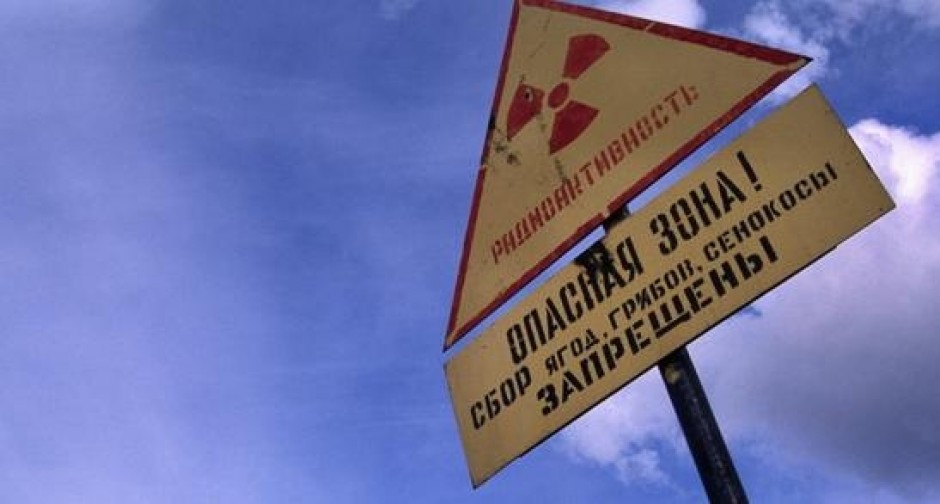
New Managing Director for Bellona Norway
The Board of the Bellona Foundation has appointed former Minister of Climate and the Environment Sveinung Rotevatn as Managing Director of Bellona No...
News

Publish date: October 28, 2015
Written by: Anna Kireeva
Translated by: Charles Digges
News
MURMANSK – Russia’s first radioactive materials storage site north of the Arctic Circle, known formerly as Radon, has reached the final step before decommissioning and entirely clearing its facilities of radioactive waste.
Some 30 transports of radioactive waste to Sosnovy Bor in Russia’s Leningrad Region have left the site, which is located close to the Russian-Finnish border.
The Independent Barents Observer news portal noted that the emptying of the site comes after the West poured more than €5 million into renovating it in the early 1990s.
In September 2015, a comprehensive engineering and radiological survey was conducted at the Murmansk radioactive waste storage site run by state nuclear waste handler RosRAO. The site was formerly run by Radon.
 RosRAO's Alexander Penchikov. (Photo: Anna Kireeva/Bellona)
RosRAO's Alexander Penchikov. (Photo: Anna Kireeva/Bellona)
According to Alexander Penchikov, head of the Murmansk branch of RosRAO, the storage site has been in use since 1962 and served companies producing radiological waste in the Archangelsk and Murmansk Regions.
Radon took delivery of radioactive waste from the decommissioned Lenin nuclear icebreaker, radiation sources from X-ray machines, and other radioactive waste from hospitals and industry in the Murmansk and Arkhangelsk Regions for long-term internment, the Independent Barents Observer news portal reported.
The facility is the only such site in Russia to be shut down by oversight authorities for failing to meet nuclear and radiation safety demands.
In 1994, the Kola inspectorate for radiation safety monitoring – a division of the now-defunct Gosatomnadzor federal nuclear safety authority – decided to shut Radon down,.
A protective sheltering was built over the site and its dangerous legacy was inventoried.
According to Penchikov, some 200 cubic meters of solid radioactive waste, and another 150 cubic meters of liquid radioactive waste were dug up and identified between 2011 and 2015.
“The aim of the project was to prepare the facility […] for a comprehensive engineering and radiological survey,” Penchikov told local journalists during a tour of the facility.
This process was accomplished in two stages. First, specialists from the Leningrad Regional branch of RosRAO conducted a full investigation with a view to radiation safety. Later, a group of specialists from Izhevsk conducted tests both on the capacity of the facility and adjoining territories, as well as on the protective sheltering, its foundation, and roads leading to the site.
Penchikov said the Izhevsk infrastructure analysis is still in the works.
Radioactive waste to the Leningrad Region
Penchikov said special technology from the Leningrad Region’s RosRAO has been used to transport the radioactive waste from the Kola Peninsula.
“Two hundred cubic meters of solid radioactive waste was removed by a combination of eight types of transport, including light and heavy trucks,” said Penchikov, saying the removal took some 30 loads. The hazardous cargo was transported by convoy and specialists carrying Geiger counters.
When asked by Bellona why the radioactive waste was taken 1,400 kilometers to the south instead of to nearby Sayda Bay, Penchikov said facilities at Sayda Bay weren’t yet permitted to take Radon’s type of waste when the decision to remove it was made.
 Sayda Bay.
Credit: vestnikatomproma.ru
Sayda Bay.
Credit: vestnikatomproma.ru
He did, however, note that some hardware stored at Radon that had come from the Lenin icebreaker had been transported to Sayda Bay for temporary storage.
Alexander Nikitin, chairman of the Environmental Rights Center Bellona, said that it made more sense to take a small portion of industrial radioactive waste to the Leningrad Region’s Sosnovy Bor because Sayda Bay was not yet ready to receive this type of radioactive waste. He said the storage facilities at Sosnovy Bor were of a different kind.
“The most important thing is that the quantity of waste stored at – to put it mildly – a not terribly safe radioactive storage facility has been reduced,” said Nikitin.
The Future of the former Radon facility
Penchikov said the decommissioning schedule for Murmank’s RosRAO facility should include naming an organization that can produce design and estimate documentation for taking it out of service.
In 2017, public hearings will be held on granting a license for its decommissioning, and between 2018 and 2022 it will be scratched from service.
There are rumblings that the facility could be used for storing other types of waste, but radiation authorities have not yet made any decisions.
RosRAO told the Independent Barents Observer that its conducting studies on the site before declaring it “clean.” This conclusion is expected by 2020.
At present, all work is focused on plans from Russian state nuclear corporation Rosatom to liquidate the site.

The Board of the Bellona Foundation has appointed former Minister of Climate and the Environment Sveinung Rotevatn as Managing Director of Bellona No...

Økokrim, Norway’s authority for investigating and prosecuting economic and environmental crime, has imposed a record fine on Equinor following a comp...

Our op-ed originally appeared in The Moscow Times. For more than three decades, Russia has been burdened with the remains of the Soviet ...

The United Nation’s COP30 global climate negotiations in Belém, Brazil ended this weekend with a watered-down resolution that failed to halt deforest...